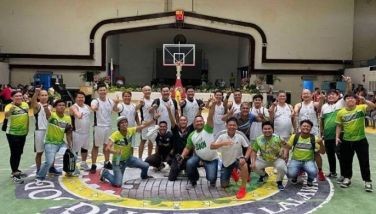Restore open counting in automated elections

Secret balloting, open counting. That’s basic in fair, credible elections. Seven post-martial law national and local polls operated that way. In precincts of 200 voters at most, ballots solemnly were cast. Then teachers serving as election inspectors oversaw the public counting. Votes were read aloud and chalked on blackboards for all to hear and see. The process took about three hours. It was generally calm, as the 200 were kinsmen and neighbors. In some hotspots political warlords thwarted the rule. Hired goons stuffed boxes with pre-filled ballots and rigged the counts. Although headlined, those were rare. Highly secured special re-votes invariably negated the cheats.
With automation starting in 2010 balloting was still secret. But it became 12 times costlier. Paper ballots gave way to special cardboard, fed into optical scanners. Scores of billions of pesos was spent in four automated polls to lease-purchase, accessorize, deploy, retrieve, and warehouse the machines.
Most anomalously open counting vanished. Voters were told to go home and await televised announcements of machine tallies. Yet with no proofs in the form of public precinct counts, results were doubtful. It was as if the goons had taken over all the precincts. The silence of the machines lulled voters into thinking all was well. But computer experts knew that those were manipulatable. Candidates couldn’t complain, though. New rules barred them from questioning the machine outputs.
The Comelec implemented a wrong automation system. It ignored the experience of other countries. Foremost is Germany, among the first to automate in the 1980s. Then its computer-literate population realized that machines were prone to tampering. Germany reverted to manual election – and restored the basic rule of open counting after the secret balloting.
What needed automating in Philippine elections was not the vote casting and precinct counting. It was the transmittal of precinct tallies and the canvassing or consolidation. Those phases were most vulnerable to large-scale fraud. Teacher-inspectors transporting the ballot boxes and tallies late in the night to municipal, city, and provincial canvassing centers were waylaid. Goons snatched the boxes. False results were delivered. More prevalent, the canvassers were bribed millions of pesos to stage “dagdag-bawas” (vote padding-shaving) by the tens to hundreds of thousands. Reliant on highest bids and actual cash deliveries, the cheating took weeks to complete.
The Comelec should have retained manual precinct balloting and counting, but automated the transmission and canvassing. Technology instantly can record then transmit publicly counted precinct votes. No need for risky physical transporting. Technology also instantly can sum up transmitted precinct tallies at the municipal, city, district, province, and national levels.
In case of doubt, there would be publicly counted precinct results to fall back on. Anybody would be able to countercheck, based on precinct results posted online. False entries would be found out by the citizens since they had participated in their respective precinct counts.
In the wrong automation, there is an “unofficial” quick national canvassing. The televised speed again lulls the electorate into believing the process was accurate in all levels and in all races. Then the Comelec officially canvasses the consolidated results from the districts and provinces. Proclamation of winners comes about ten days later.
But computer experts have warned that automated cheating does not employ goons or bribed canvassers anymore. Just a few crooked techies can embed programs to shave and pad consolidated votes. There’s no way to countercheck since there are no public precinct counts.
In last May’s election there was a suspicious seven-hour lag from the airing of the first 0.4 percent of precinct tallies to a bulk of 92 percent. In 2016 there was unauthorized editing of curiously misspelled candidates’ names. In 2010 and 2013 there were initial spurts of millions of over-counted votes for certain national candidates. Oddly exceeding the voter turnout, the numbers were then “corrected.”
Assuming those were mere technical glitches, doubts still linger – precisely because there are no auditable proofs. The transmitted and consolidated results come from the unverified machine counts at the precincts.
The law does not compel automation of precinct balloting and counting. It gives the Comelec discretion to redo only the needed phases. Time to correct the failed use of those expensive “vote-counting” scanners.
* * *
Condolence to the family of comedian Gary Lising on his sad passing.
Gary was so funny because the jokes were on him. “I come from a religious family; my father was a priest,” he introduced himself. Then this: “When I was born I was so ugly that the doctor slapped my mother.” And this: “Who would have thought that my beautiful wife would marry me; I’m the best proof that love is blind.” Plus this: “I feel fulfilled when I see my son. He is very handsome. He looks like my driver.”
Gary sorely will be missed.
* * *
Catch Sapol radio show, Saturdays, 8-10 a.m., DWIZ (882-AM).
Gotcha archives: www.philstar.com/columns/134276/gotcha
- Latest
- Trending
























